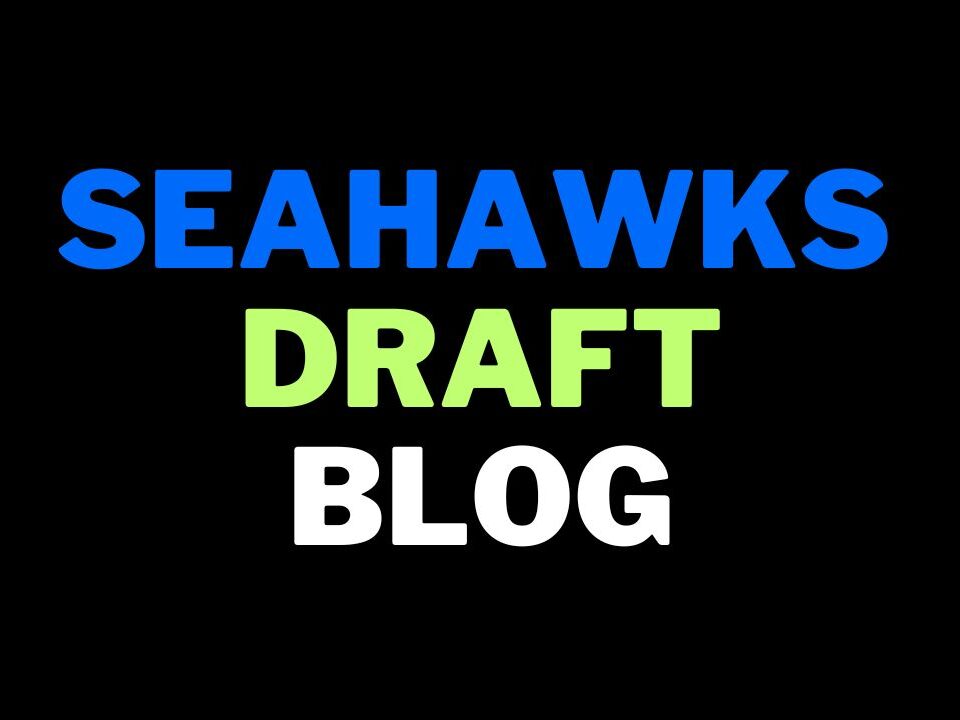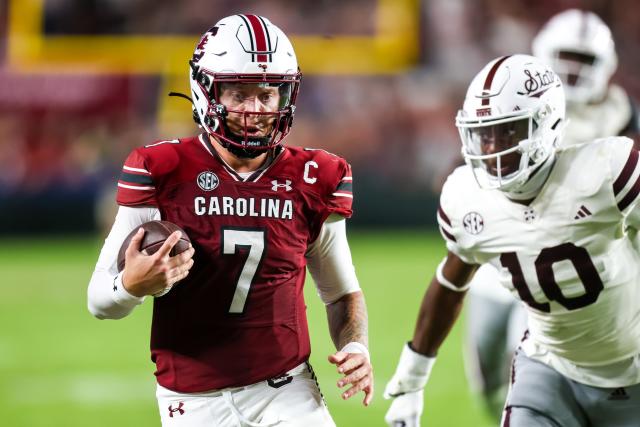/cdn.vox-cdn.com/uploads/chorus_image/image/71429831/usa_today_19136985.0.jpg)
Quandre Diggs is not playing well enough
After three weeks of the NFL season, there are 85 qualifying safeties graded by PFF. Quandre Diggs is currently graded 85th and last.
This is a problem for the Seahawks.
Diggs has to play a lot better than this. He has the second highest cap hit on the team this year at $12m. It’s even more concerning, though, when you consider next year.
The team re-worked Diggs’ deal before the start of the 2023 season to create extra cap space. It now means his cap hit for 2024 is an eye-watering $21.2m. By pushing 2023 money into 2024, they’ve also made it far more challenging to cut him.
If his performance doesn’t drastically improve in the coming weeks, the team will have little choice but to consider their options. However, the re-worked deal now means they’d take on $10.2m in dead money to part ways, while saving $11m in 2024. Per Over the Cap, there’s no financial difference if they designate Diggs as a post-June 1st cut or cut him outright.
Unfortunately it’s another example of the Seahawks not managing their cap well.
Among the other moves made recently to create space, they also re-worked Jamal Adams’ contract. He is now due a cap-hit of $26.9m in 2024.
Unbelievably, Diggs and Adams and currently on the books for a combined $48.1m next season. That’s staggering.
Like Diggs, they’ve also made it harder to cut Adams if things don’t go well as he prepares to return from injury to play against the Giants. It would cost the Seahawks $20m in dead money to cut him outright next year. A post-June 1st designation would spread this out over two years — but you would still be paying Adams a hefty sum to not be part of your roster.
Even Julian Love is expensive next year. He has an $8m cap hit with $2.4m in dead money attached.
There are a couple of key things to discuss here.
Firstly, the investment at safety. Why?
How is it that the Seahawks have got themselves into a situation where so much is invested in this position? Especially at a time when some teams have decided, much like the running back position, it’s a fungible part of the roster.
The Eagles allowed their safeties to walk in free agency this year and are currently starting Reed Blankenship ($871,667) and Justin Evans ($1.5m). They’re mixing in a third round rookie (Sydney Brown) and Terrell Edmunds ($1.9m). Their total cost on the position is $5.2m for four players.
The 49ers have Tashaun Gipson ($2.1m) playing next to Talanoa Hufanga ($1m). The backups are a third round rookie and Ambry Thomas ($1.3m). The total positional spend is $5.4m.
The Cowboys are starting Malik Hooker ($4.5m) and Donovan Wilson ($3.3m) with Jayron Kearse ($6.6m) and Juanyeh Thomas ($750,000) as backups. Combined, that’s a shade over $15m.
The Chiefs splashed out on Justin Reid ($12.7m) but they pair him with Bryan Cook ($1.3m). Their backups are a fourth round rookie and Mike Edwards ($2.8m).
The Bengals allowed Jessie Bates — a consistently high performer — to depart in free agency, having chosen to invest in their defensive line (Troy Hendrickson, D.J. Reader, Sam Hubbard) instead. They drafted Dax Hill a year in advance to replace him and he starts next to Nick Scott. They drafted Jordan Battle in round three this year. Their total spend on the position is $6.7m.
The Bills are one of the bigger spenders at the position, with Micah Hyde ($10.5m) and Jordan Poyer ($4.8m) listed as starters. Taylor Rapp ($1.7m) and Damar Hamlin ($980,000) are the backups for a total spend of $17.9m.
Here’s the spending comparison at safety in list form:
Seahawks — $28.3m
Eagles — $5.2m
49ers — $5.4m
Cowboys — $15m
Chiefs — $17m
Bengals — $6.7m
Bills — $17.9m
Not every team has to be built the same way and I’m not arguing that these teams are necessarily right and the Seahawks are wrong. Yet it’s difficult to work out why the Seahawks have lurched to such an extreme where Diggs, Adams and Love are all set to account for $56.2m in 2024 — more than ten times what the Eagles and 49ers are spending at safety in 2023. They’re set to take up nearly a quarter (22%) of Seattle’s entire cap next year.
This is a remarkable level of investment and what are they getting in return? As mentioned, Diggs’ 33.4 PFF grade is the lowest in the NFL at his position. Love’s 51.0 grade ranks him 75th out of 85 qualifying players. Adams is yet to play a down of football and is returning from a serious injury.
Even if all three were playing at a high level, you could still question the money being spent. The safety position is going through a market correction. Players are not re-setting the market any more. Jessie Bates — PFF’s second highest graded safety so far — became only the fourth highest paid safety when he joined the Falcons. His average salary is smaller than Adams’ despite being two years removed from that contract being penned.
Elsewhere, it seems teams are increasingly prepared to plug in cheaper role players or rookies — saving money for other positions.
Why have the Seahawks invested so much at safety? Why have they essentially doubled-down on that investment by pushing money into 2024? Why are the players they’ve spent money on performing so poorly?
The second issue to discuss is dead money.
This season, $18.7m of Seattle’s cap-space has been spent on players to play somewhere else. The Russell Wilson trade meant the Seahawks took on a large dead-cap hit. This was the first year they could get away from that and yet it’s still an issue because of poor decision making with other players.
Why did they sign or re-sign players a year ago with so much dead money attached? Was there really such a strong, competitive market to need to commit so much to Quinton Jefferson, for example, that he now has to cost $2m to not be part of the team? They re-worked Shelby Harris’ deal, only to cut him months later and waste $4.2m. They did the same with Gabe Jackson, who is costing them $4.7m. Carlos Dunlap, who they re-signed at a hefty price before deciding he wasn’t a fit after all, is still costing them $4.2m this year.
Imagine what an extra $18.7m could’ve done in free agency this year?
They face the same problems next year. They have less than a million dollars to spend in real cap space. They can roll-over whatever they have left this year — but that will diminish with any signings they make between now and the new year (eg if Jason Peters was signed to the full roster). Currently, they’ll roll over enough to have about $10m to spend in effective cap space.
Here’s a list of players who are out of contract in 2024 who would need to be re-signed or replaced:
Bobby Wagner
Damien Lewis
Noah Fant
Jordyn Brooks
Drew Lock
Phil Haynes
Devin Bush
Evan Brown
Mario Edwards Jr
Colby Parkinson
Deejay Dallas
Michael Jackson
Meanwhile, the likes of Darrell Taylor will be restricted free agents. There are a bunch of depth players reaching free agency too, you can see the full list here.
This is a long list of starters and contributors. They only have $10m and a draft class to make up the numbers.
Basically, cutting players and re-working contracts is inevitable.
I appreciate it’s part of football and all teams have to do a bit of this every year. However, the Seahawks are going to again have to take on dead money and lend on the credit card just to be able to put a roster together. That in turn will mean more wasted money for players to play elsewhere while making it harder to cut players in the future if you restructure contracts.
This is why I think it’s inevitable they will draft a quarterback in the first three rounds next year. They’ll be so strapped for cash, they’ll need their backup to be cheaper than a $4m Drew Lock. The reality is other players (starters) are going to need to be replaced by rookies too.
Cutting Bryan Mone will save $5.9m. This is an easy lever to pull and the Seahawks will only take on $500,000 in dead cap. Apart from that though, here’s the dead money attached to every player who can even be remotely considered a cost-saving, viable cut:
Quandre Diggs — $10.2m ($11m saving)
Jamal Adams — $20.1m ($6m saving)
Geno Smith — $17.4m ($13.8m saving)
Will Dissly — $3.1m ($7m saving)
Julian Love — $2.4m ($5.6m saving)
Nick Bellore — $1.15m ($2.85m saving)
All of these dead hits bar Quandre Diggs can be divided over two years by designating a post-June 1st cut — but you can only do that twice per year.
As you can see, there’s not really much to go at. It says it all that if they want to move on from Nick Bellore next year (he turns 35 in May) it will cost them over a million dollars in dead money. How? Why? How do you explain a contract structured that way? With the greatest respect to Bellore, was he seriously not going to re-sign without that level of commitment for 2024?
Biting the bullet at safety is going to cost the team a fortune. Given the current performance, it’s unavoidable without a serious and dramatic improvement. It begs the question why they didn’t get the pain out of the way this year? Just get cheaper at the position and then feel the benefit in the future?
For example, Ryan Neal is only costing Tampa Bay $1m. Imagine how much freedom they would’ve had for next year if they were committing to players like that, rather than splurging on Diggs and co.
Diggs, Adams and Love really have to step up to the plate now and deliver at a high level. The team has gone all-in at safety. Results are required. The Seahawks, at least according to the financial data, have banked on the safety position elevating this defense.
If Diggs and Love can’t improve dramatically and if Adams can’t stay healthy and/or return to his best, this will be a huge financial blunder by the Seahawks and it will threaten their ability to improve the roster in the future.
It also calls into question their approach to contracts, dead money, positional priorities and cap management.
It might be inconvenient to have this discussion now when many will prefer to focus on the next game. The future success of this team, however, is being jeopardised by decisions made on the cap.
Managing your cap is as important as drafting well and executing on the field. It’s not something talked about enough beyond the various Seahawks blogs and really, that has to change. The decisions being made need to be challenged.
If you enjoy the blog and want to support the site via Patreon — (click here)




